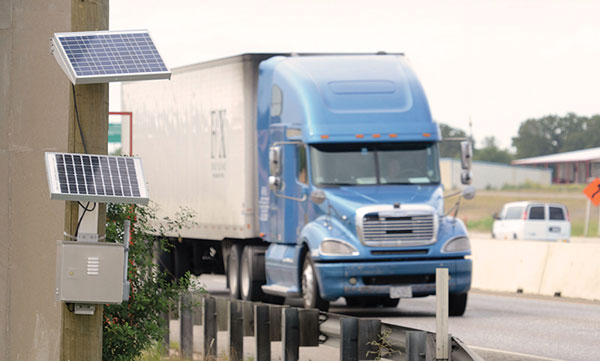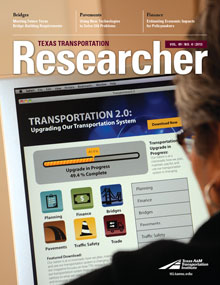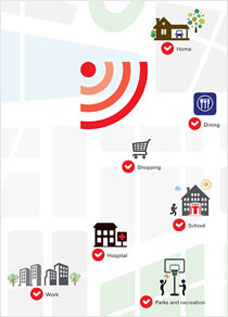Advancing Travel Survey Technology
For decades, transportation planners needed to go directly to the source to find out where people were going and why — and that often meant stopping vehicles to conduct one-on-one interviews with motorists on the roadside. Due to safety concerns and traffic delays, roadside surveys are now rarely used.

“The transition to integrate new technology into travel data collection has been an ongoing process,” TTI Transportation Planning Program Manager Ed Hard explains. “Our methods have changed with changes in technology, and I believe TTI is helping to lead the way in how surveys will be conducted in the future.”
Hard and his team were among the first transportation planners in the nation to use Bluetooth technology for origin-destination data collection. They completed an extensive travel survey in Omaha, Neb., last spring using a TTI-developed technology called anonymous wireless address matching (AWAM). The Bluetooth-based system was originally developed by TTI‘s Research and Implementation group in Houston to measure travel times for hurricane evacuation along I-45 in Houston. But Hard and his team devised a way to tailor the technology to gather data needed for travel surveys. AWAM reads the unique addresses from anonymous wireless devices such as cell phones and onboard diagnostic systems.
For the Omaha survey, TTI combined AWAM with automatic license-plate recognition technology (used mostly on toll roads for billing purposes) and a first-ever, community-wide, Internet-based travel survey.
“With [Internet-based] advancements, information is easier to collect than using age-old roadside surveys, and the process is less costly and time consuming. It’s also a lot safer,” Hard points out. “As much progress as we’ve made in using new technologies in collecting travel data, even greater advancements are on the horizon.”
TTI is conducting research to evaluate readily available anonymized origin-destination data from cell phones and onboard navigational devices to study travel patterns at the urban, regional and statewide levels. The research will compare data from cell phones, Bluetooth and mobile GPS devices to determine which technology, or combination of technologies, yields the most accurate results. Hard reiterates that the data are completely anonymized and that they cannot be tied to a person or device.
“The Texas Department of Transportation [TxDOT] is continuously working to modernize and improve our business operations,” Bill Knowles, director of TxDOT‘s Traffic Analysis Section, says. “Part of this effort is to integrate the use of Bluetooth, mobile GPS and cellular technologies into our travel survey program. Initial results of the use of Bluetooth data in lieu of intercept surveys have shown promise. The use of new methods and data from these technologies for travel data collection is an important part of the TxDOT travel survey program’s future.”

